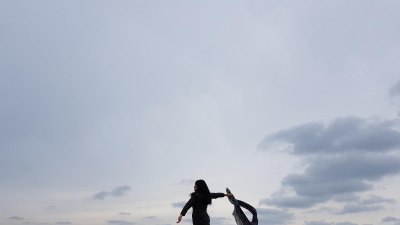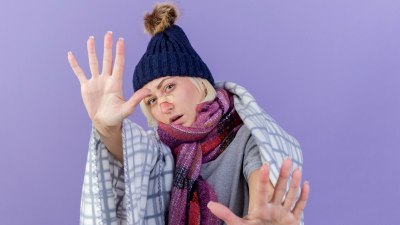Why You Only Buy Coats When It’s Too Late to Wear Them
Explore the psychology behind late-season coat purchases and what drives this common behavior.

Image by gpointstudio on Freepik
As the seasons change, many of us find ourselves in a peculiar shopping routine. You may have noticed how your excitement for new coats often comes at a time when the weather is about to warm up. This annual cycle leaves many scratching their heads, wondering why we only buy coats when it’s too late to wear them. Let’s delve into the psychology of consumer behavior, societal trends, and personal habits that contribute to this phenomenon.
Understanding Seasonal Shopping
The concept of seasonal shopping isn’t new. It has been a topic of interest for retailers and psychologists alike. When it comes to clothing, particularly outerwear like coats, the timing of purchases can reveal much about consumer behavior. Fashion has long dictated that winter wear often makes its grand entrance before the cold weather sets in. However, many shoppers delay their purchases until they’re faced with frigid temperatures and limited options.
Psychological Factors at Play
One of the first factors to explore is the psychology of procrastination. Many individuals put off purchasing winter coats until the last moment, likely due to a combination of avoidance and hope. The thought of spending money on winter gear may feel particularly daunting as we face warmer weather. Consequently, we delay decisions, hoping for an elusive end to the cold spells instead of acting on the inevitable need for outerwear.
FOMO: The Fear of Missing Out
Another psychological driver is the Fear of Missing Out (FOMO). This phenomenon is prevalent among shoppers who may feel rushed to buy seasonal items. The urgency becomes even more apparent as retail stores begin to display coats as winter approaches, tapping into our collective anticipation for the season. However, this creates a paradox; the more aware people become of these items, the more they procrastinate until they feel pressured to buy. By the time they act, they essentially settle for what remains on the racks, which are often the less desirable choices.
Social Influences
Social influences also contribute to this late purchasing behavior. We often look to others when making fashion decisions, and seeing friends or celebrities wearing stylish winter wear can trigger a desire to fit in. However, these influences might also lead to indecisiveness, as we grapple with personal style preferences compared to what’s currently popular. This can cause delays in purchasing decisions, leading people to purchase coats only when the urgency hits.
Marketing Strategies
Retailers play a significant role in the timing of coat purchases with their marketing strategies. Seasonal sales, ads, and promotional events highlight outerwear at key moments throughout the year. Here, consumers can observe a conflict; while the marketing bombardment induces a sense of urgency, it can also trigger a counterintuitive response where shoppers wait longer to see if prices drop or if trends change. As the season progresses, and with it less stock available, consumers often find themselves in a challenging situation where their options diminish, pushing them to buy coats at an inconvenient time.
The Allure of Sales
The draw of sales can’t be understated. As the winter season comes to an end, retailers often slash prices to clear inventory. This has the appealing effect of enticing consumers to buy coats later in the season. Shoppers enjoy feeling savvy by taking advantage of lower prices, only to find that they can no longer effectively wear their new coats until the next cold snap. This delay can create feelings of buyer’s remorse since the purchase doesn’t align with immediate needs.
Practical Considerations
From a practical standpoint, there’s something to be said about the value of anticipating the future. Many consumers rationalize their late purchases by telling themselves that they are planning ahead. This reasoning provides comfort, although it often leads to misjudgment of the timing involved. While waiting for those last few weeks of freezing temperatures to pass can seemingly make sense, it often does not support the logistical reality of shopping in an unpredictable climate.
Fashion Trends and Their Impact
Fashion trends also affect when people decide to buy their coats. Each year introduces new styles, and consumers might feel pressured to hold off until they see what’s hot on the runways or streets. As trends evolve, individuals may want to wait and see if their favorite designs are coming back into fashion. Often, this results in last-minute purchases as the season transitions, leaving shoppers grabbing what’s left rather than selecting desirable pieces that suit their wardrobe.
Emotional Buying and Connection
Emotions play a significant role in the shopping experience. Buying), especially outerwear can often symbolize warmth, comfort, and security. During the transition from winter to spring, consumers may associate those comforts with nostalgia or a sense of yearning, triggering impulse purchases. They find themselves drawn to coats for emotional rather than practical reasons, prompting purchases when they can no longer wear them before warmer weather sets in.
Reflecting on Past Purchases
Looking back on past purchases can bring insight into this counterintuitive behavior. If you’ve ever found yourself staring at a coat you bought late in the season, realizing you wore it only a handful of times, you’re not alone. The frustrating cycle often leads individuals to reflect poorly on their decisions, as each year seems to repeat the narrative. This reflection may escalate the desire to buy more expensive or ‘investment’ pieces, further complicating the timing for purchase as one weighs cost versus value.
Solutions to the Problem
So how can we break this cyclical buying behavior? One practical solution lies in proactive shopping. Anticipating the need for a winter coat well in advance puts consumers in a position to make thoughtful choices. Additionally, creating a versatile wardrobe where a single coat can suit multiple occasions encourages purchasing coats earlier in the season. Investing in a timeless, high-quality coat could similarly change the buying pattern, shifting the mindset from reactive to intentional.
Understanding Personal Needs
It’s also essential to understand your personal style and needs. By assessing your wardrobe and identifying gaps before the shopping frenzy hits, you can ensure that your coat purchase serves a particular purpose. This approach can lessen the anxiety associated with winter wear shopping and pave the way for more satisfying purchases.
The Seasonal Mindset
Additionally, shifting your mindset from short-term to long-term can lead to better decision-making. Embracing the seasonal mindset allows individuals to remain focused on upcoming months and makes the need for outerwear feel like less of an impulse. To further aid in planning, consider setting reminders or timelines that prompt early-season shopping, allowing time to search through prospective options eagerly.
In conclusion, the phenomenon of buying coats when it’s too late to wear them stems from a myriad of factors—from psychological hurdles and social pressures to practical issues and emotional connections. Whether it’s due to procrastination, retail influences, or a fear of missing out on the latest trends, the cycle continues each year. By being aware of these elements, you can take proactive steps to purchase outerwear that suits your style well before the first chill hits. Understanding and addressing this shopping behavior can lead to a more satisfying and fulfilling experience, setting you up for success when winter arrives again.











